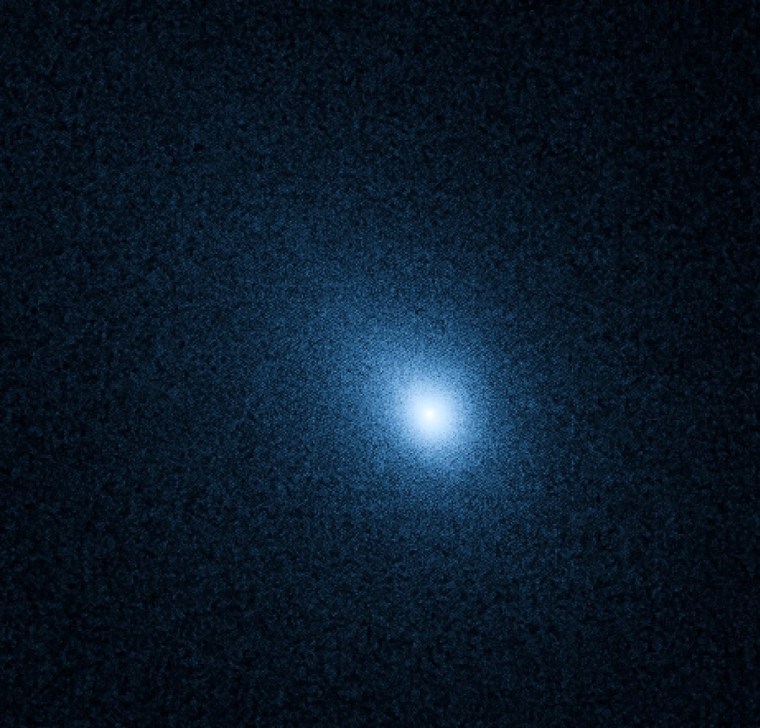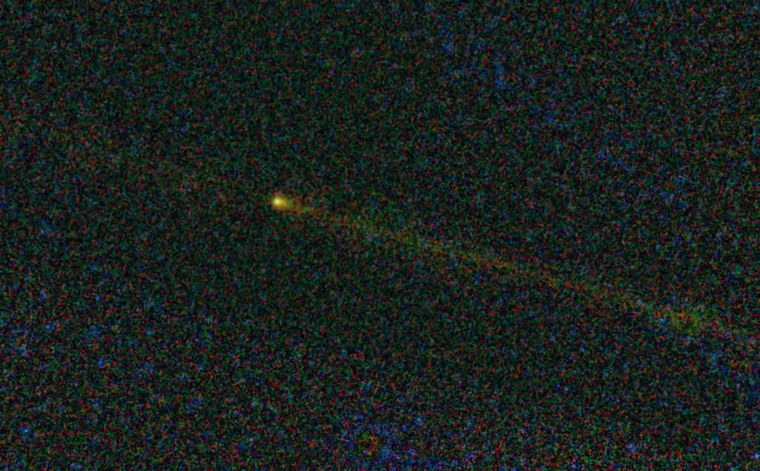New photos of an icy comet taken from Earth and space are giving astronomers a tantalizing preview of the object ahead of an upcoming flyby of a NASA spacecraft.
In one photo, Comet Hartley 2 is shown as it appeared to the camera eye of NASA's Wide-field Infrared Survey Explorer — or WISE — a space telescope scanning the solar system for hidden asteroids and comets. Another snapshot, taken by a NASA scientist using an Earth-based telescope, shows the comet as little more than a bright green smudge against the black background of space. [New Photo of Comet Hartley 2]
Even the Hubble Space Telescope has taken a gander at Hartley 2, revealing it as a bright comet sailing in a sea of night. The comet is nearly 1 mile (1.5 kilometers) wide, according to the Hubble observations.

The new photos set the stage for the planned Nov. 4 flyby of Comet Hartley 2 by NASA's Deep Impact spacecraft, a probe that completed its main mission to a different comet in 2005 and is being recycled to visit Hartley 2 as part of a new project called EPOXI.
"We want to know how the comet behaves as it comes toward the sun and out of deep freeze," said James Bauer, a scientist at NASA's Jet Propulsion Laboratory in Pasadena, Calif., working on the WISE mission. "The WISE image is one critical puzzle piece of many that will give a comprehensive view of the behavior of the comet through the time of the encounter." [WISE Telescope Image of Comet Hartley 2]
NASA scientist William Cooke took the new ground-based photo of Comet Hartley 2. Cooke used a telescope near Mayhill, N.M, which he controlled via the Internet from his home in Huntsville, Ala.
"Comet-watching from the comfort of your living room!" NASA officials wrote in a blog posting. "Modern astronomy is truly amazing."
Comet Hartley 2, also known as 103P/Hartley 2, is a small periodic comet. It was first spotted by Australian astronomer Malcolm Hartley in 1986 and orbits the sun once every 6.5 years.
This year, the comet will make its closest approach to Earth since it was first discovered. On Oct. 20 it will come within 11 million miles (17.7 million km) of Earth.
This Space.com Comet Hartley 2 skywatching guide describes how to see the celestial event.
The WISE photo of Comet Hartley 2 was taken on May 10 but released on Tuesday. The comet has been displaying an increasing amount of activity in recent months, with gas and dust erupting from jets as it draws closer to the sun.
"Comparing the dust early on to what we see later with Epoxi helps us understand how the activity started on Hartley 2," said EPOXI mission principal investigator Michael A'Hearn of at the University of Maryland in College Park.
But the observations from Hubble found no evidence of the types of outgassing jets typically seen in the so-called "Jupiter family" of comets, a group that includes Hartley 2. Instead, the comet appears to have a more uniform nucleus, suggesting that the material on its surface is relatively young, researchers said.
